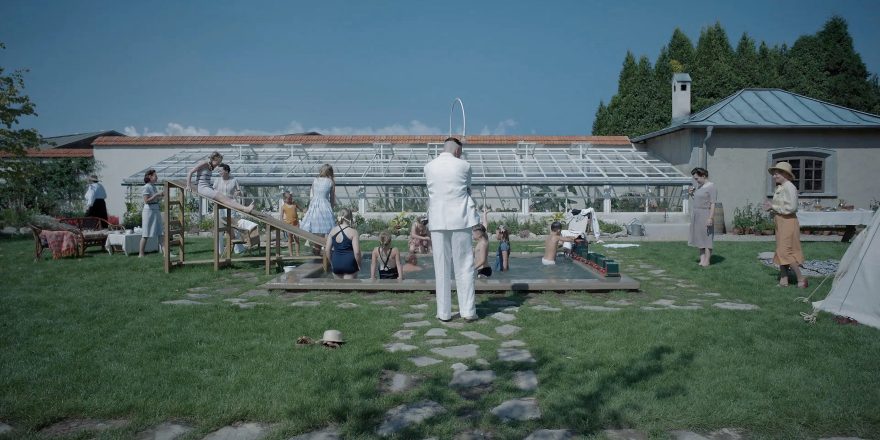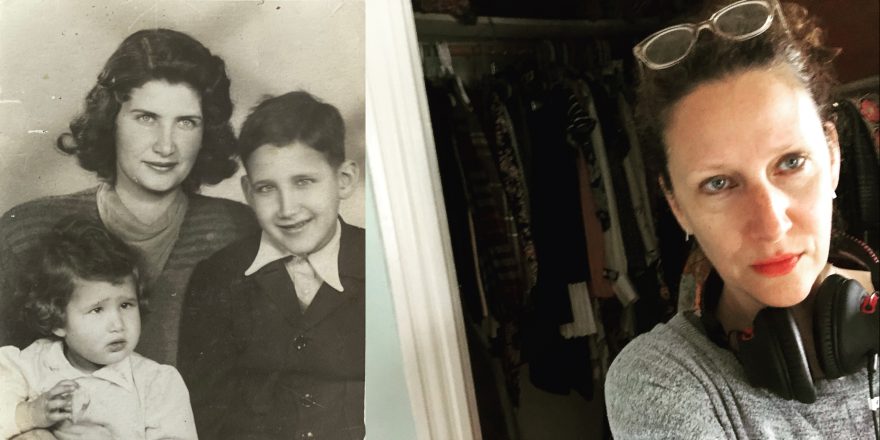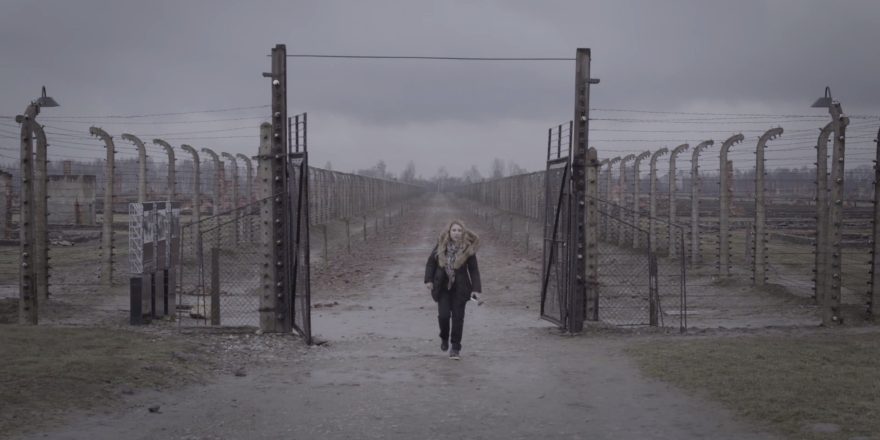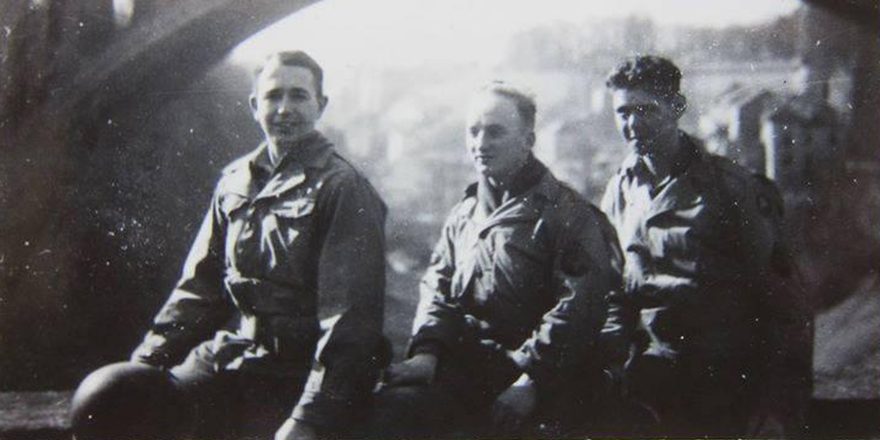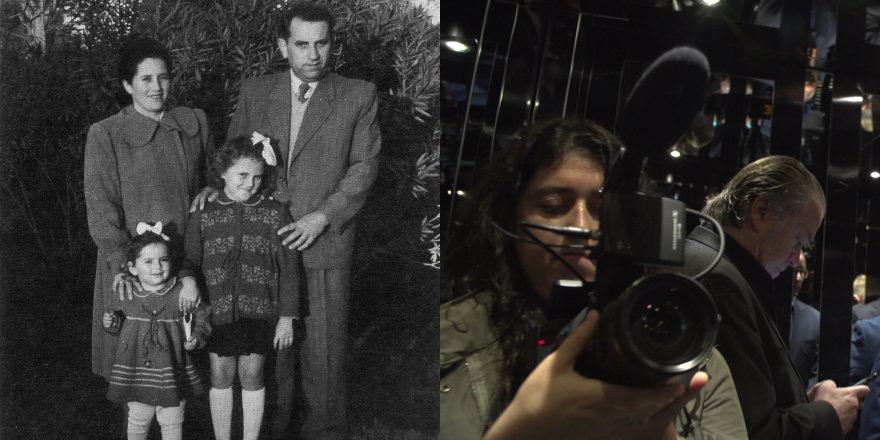During World War II, the Nazis labeled the area surrounding Auschwitz the “zone of interest.” Similar to the term “concentration camp,” this banal, nondescript assignation was part of strategic normalizing of mass murder and systemic violence in support of fascism and its human hierarchies.
As I watched and listened to Jonathan Glazer’s vitally important film The Zone of Interest, all I wanted to do was reach into the cinematic space before me and strangle the characters on the screen. The characters in question are the Hoss family: Rudolph Hoss, the Nazi commandant in charge of Auschwitz, his wife, Hedwig Hoss, and their five small children (there are servants as well). I tamped down my rage and felt my blood pressure rising. I reminded myself to breathe. My mom was a Hungarian-Jewish child in hiding during the Holocaust and I grew up with the broken pieces of my family history embedded within. My grandfather Laszlo Tihanyi (Weisz) and my great-grandfather Sandor Vital (AKA Alexander) were both murdered in Auschwitz. I recently found their records from the camps and had an emotional discovery.
I learned that my grandfather, a trained engineer, had been transferred to Auschwitz and murdered there, after being used as forced labor in Muhdorf concentration camp, where Nazi weapons were built. That meant my grandfather and great-grandfather were possibly in Auschwitz together – maybe only for a day, a month or a moment? – before Sandor was killed. Laszlo was killed after four months there, according to the records. I can now imagine them offering each other some kind of comfort … My grandmother, mom and uncle would have been murdered there too if not for Raoul Wallenberg and for the tremendous luck and courage of my grandmother Isabelle Vital-Tihanyi (whose story is explored in depth in my podcast, How My Grandmother Won WWII). I wasn’t supposed to be here, according to the Nazi plan for the Hungarian Jews – or “Operation Hoss,” as the film reminds us it was called – named after Rudolph Hoss. But I am here, in this New York movie theater, experiencing an overwhelming, burning, seething, rage-filled desire to exact violent revenge. But I am not, and never will be, violent. I assume a fetal position in my seat and continue watching.
[Photos of death cards of my great grandfather and grandfather at Auschwitz alongside photos of Sandor and Laszlo]
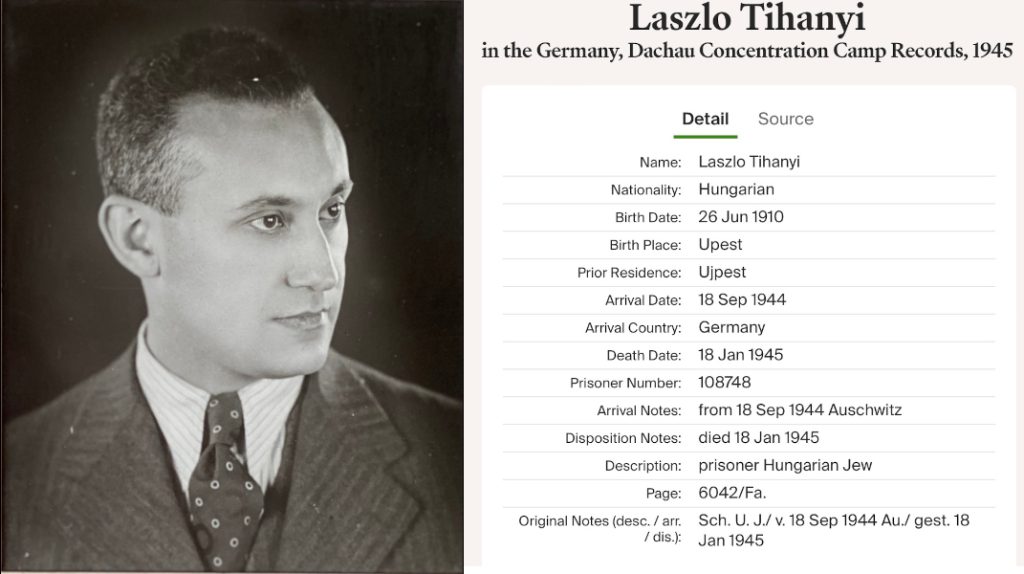
Glazer’s camera remains at a distance, yet doesn’t leave the Hoss family alone. We don’t sympathize with them ever; we are not being asked to – there are no close-ups, no tracking shots, the few impressionistic shots are used only for flowers grown with the ash of human remains. We do, however, follow this family relentlessly in their home, as they close their many doors, turn off and on their many lights. When Rudolph Hoss, so precisely played by Christian Friedel, goes inside Auschwitz, literally at the end of their driveway, we don’t see what he sees. Since Rudolph is not affected in his everyday life by what he does or sees within the concentration camp, Glazer would like us to imagine living in the same way as Rudolph. Because the Holocaust has been so fully written about and analyzed by historians, it makes for an ideal study of humankind’s ongoing capacity for violence, depravity and staggering lack of empathy, no matter what country or time period we consider.
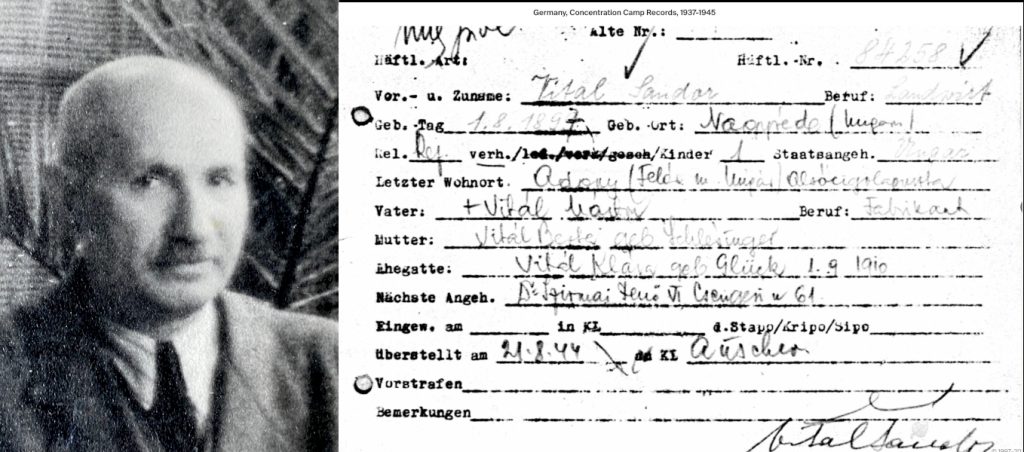
The Hoss family lives a dream upper-middle-class suburban life, with one slight inconvenience: they share a wall with Auschwitz, the largest of the Nazi concentration camps, where 1.1 million people were mass murdered. The family doesn’t see their proximity to genocide as even an inconvenience, though – they make the most of it. Hedwig Hoss receives furs, jewels and lipstick stolen from the people her husband murders. Only one of their older daughters seems to be increasingly bothered by the constant gun shots, screams and flames arising from the crematoria chimney next door. (This child wanders at night and hides in odd places, without explanation.) These disturbances are minor for the Hoss family. Indeed, I was hard pressed to imagine a better portrait of a family navigating work-life balance so seamlessly.
As we train our eyes on what feels like every waking moment of this family, we are forced to ask how this level of indifference to mass murder becomes so everyday and natural. By the end of the film, despite our horror, or rage, if we are honest, we find a way to understand them – or this aspect of the human species – and this is exactly the larger point of The Zone of Interest.
We have all become inured, to varying degrees, to the spectacular violence and cruelty humans continue to do unto each other – inequity and oppression have long been accepted as status quo. We have all been taught to compartmentalize, lest we be crippled by grief and despair and rendered unable to carry on. After all, nothing supports the argument that our cyclically violent nature is inevitable more than the fact that the world is and has always been full of suffering. But the facilitating, and even encouraging, of mankind toward genocide and war is the ultimate expression of ideologies such as patriarchy and fascism, and therefore something we can stop. The Zone of Interest highlights the fascist world order through the lens of domestic trappings we are programmed to seek out. Home is where the heart is. Home is also a place to enjoy our material wealth and reinforce human hierarchies. Maybe the latter statement is less catchy, but it’s equally true.
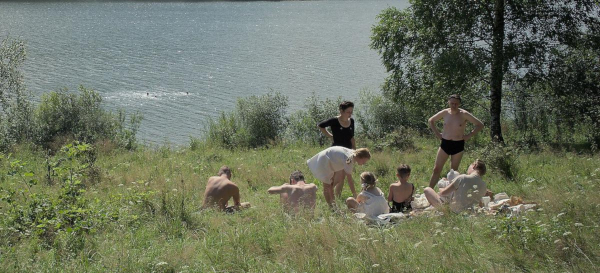
Materialism drives and inspires the characters’ greatest joy of The Zone of Interest, and it is this materialism that is so accessible to a modern audience. Hedwig receives the fur coat and lipstick from a recently gassed Jewish woman next door – and before even sterilizing the Jew-germs from it, can’t help but try on the expensive fur and dab on the red lipstick to admire herself in the mirror. It is a horrendous scene because it is a moment in this film where every single person confronts the primacy of human materialism. When Hedwig’s mother comes to visit and sees her daughter’s sprawling home, gardens and pool for the first time, she is so proud of her. She has really landed on her feet, the mother says. We humans are successful and worthy if we amass wealth. If we lack wealth, we lack worth. How we attain our wealth is less important. And every aspect of nearly every society supports this. The Zone of Interest illustrates this root cause of encouraging and nurturing our violent human tendency through our materialist systems better than any other film I have seen in recent memory.
In an “intimate” scene with Rudolph and Hedwig Hoss, the two facing each other in their separate twin beds and giggling one night, Hedwig demands to know when Rudolph will take her back to Italy for some fun. Part of our Great Dream of Material Wealth is to be a citizen of the world, to travel to all of the finest, most exotic places. This factors into the Hosses’ dream too. As Hedwig giggles and recalls a spa and some pigs, we are reminded of another Italy at that time: Vittorio de Sica’s The Garden of Finzi-Continis, Lina Wertmuller’s Seven Beauties, Primo Levi’s If This is a Man, Natalia Ginzburg’s Family Lexicon … and I was reminded of a photo I have of my great grandparents, Sandor and Boriska Vital, on their honeymoon in Venice, Italy, before WWII. I thought about traveling during the war in Ukraine, traveling during the war between Israel and Palestine, the war in Sudan, traveling so many places where I land in a walled-off zone of interest to enjoy life as a tourist. The performances in this bedroom scene conjure the memory of their past vacation so lucidly – even if we are terrified to be there with them – that off we go to Mussolini’s Italy.
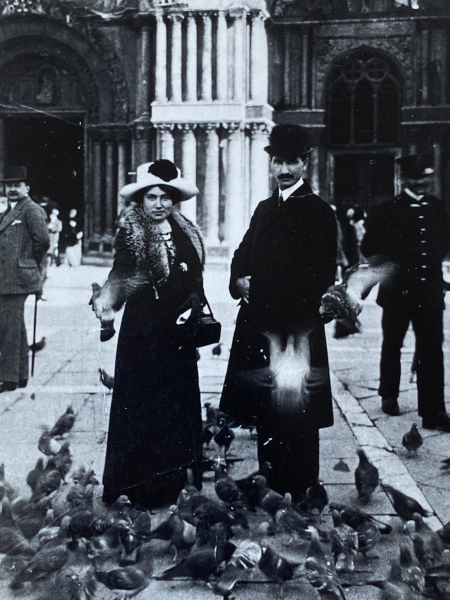
The women in The Zone of Interest present a possible pathway to freedom from the cyclical violence that punctuates all of human history. To be clear, there are women who are fascists, women who willingly play a part in the patriarchal order, women who were good Nazi murderers – and there are men and others who work tirelessly to dismantle these systems. But the women in The Zone of Interest represent an alternative to the status quo, or in Hedwig’s case a severely cracked status quo, and therefore offer the possibility of a different way forward. The most prominent example of this is the girl, based on a real-life Polish resistance fighter named Alexandria, who clandestinely delivers apples every night around the perimeter of Auschwitz. She is a woman who resists, who is discounted as a threat and uses nourishment as her weapon. Another example is Hedwig Hoss’s mother. She leaves unceremoniously in the middle of the night, seemingly unable to tamp down her better emotions and her conscience. As proud as she is of her daughter’s estate, the constant sounds of murder next door diminish it for her, in some way. She is a woman who might feel empathy because this tendency was encouraged in her. She is unable to turn this feeling off completely and she represents a female liability/hope. Then there is the ceaselessly crying Hoss baby, who senses that everything is wrong. She is the wailing of all humankind. The scene with the exhausted nanny in the screaming baby’s room at night, pacing, fretting, rocking back and forth, captures the futility of life itself within this circle of hell which is the Hoss home. What are women to do? Keep creating more children to feed this unending cycle of death and suffering that they have less and less power to exert any influence upon? The baby girl here is a disrupter, since she has not become woman yet – she is pre-social order – and is all instinct.
This brings us to Hedwig Hoss, brilliantly and indelibly portrayed by Sandra Hüller. Her light, girlish laughter fills the Hoss house and potentially echoes throughout the gas chambers in Auschwitz. Her smile and her happy disposition cause her to flit from room to room, flower to flower. Her hair is tautly pulled back and twisted and sculpted atop her head into rows of tiny rosettes, her part as straight and loud as an exclamation mark. It is impenetrable and it demands happiness. But Hedwig’s performance of womanhood buckles and reveals defectiveness when she walks. She moves like a woman who has given birth violently and vaginally to five children. She moves like a woman who carries the weight of the world between her legs, who is constantly Kegeling in order to release any evidence of outward tension or misgivings on her face. Hedwig’s walk reminds us of the question we all have: how are these people on screen the same animal as me? So, while Hedwig aids and abets in the most damning ways imaginable, Hüller’s embodiment of her conveys a short-circuiting robotic doll delighting in the fake power she wields in her Nazi world. Hüller shows us the seams.
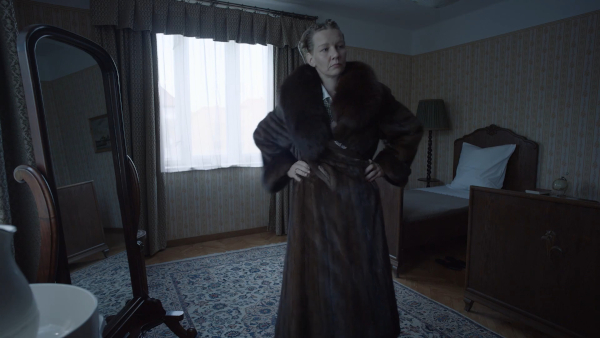
Women’s bodies have and always will be the currency and collateral in a patriarchal world order, fascist or otherwise. As the Hoss baby girl wails nonstop, as Hedwig clomps all over the film screen, unnamed enslaved women in Auschwitz are also regularly raped and brutalized. We first hear about this in a thinly veiled phone call from Hoss to his officers, telling them not to bloody or damage the lilacs around the camp: “They are for everyone and must not be damaged.” We then see Hoss in his underground office. A young starved woman enters and, we understand, habitually, takes off her shoes and undoes her hair to let it loose in the wild ragged mane it has become, and awaits rape. Afterward, we see Hoss wash his penis in a sink nearby, because of his fear of Jewish germs on his skin, or fear of the smell of her, or fear, generally.
The women and girls and performances of womanhood throughout The Zone of Interest point us back to the constructs at play in a fascist, patriarchal order. It’s not that fascism created this violent cycle in humankind. As Martinican poet and author Aimé Césaire reminds us, colonizers enacted similar depravity and violence, helping to predispose Europeans in this case, to the genocide of the Jews. And Ava DuVernay’s also vital film, Origin, based on Isabel Wilkerson’s book Caste, reminds us Nazi models were largely inspired by systemic racism in the United States. These ideological systems celebrate and encourage the violent cycle, the worst tendencies within our species. Recognizing and rejecting these ideologies may be a start in helping humankind evolve. French sociologist Pierre Bourdieu argued the necessity of reconceptualizing society in order to make power relations and injustices visible as constructs, rather than natural inevitabilities. He wrote that we need to escape what he called the “symbolic violence” within our own minds, which prevents us from thinking critically and can make the most intolerable conditions completely acceptable. Bourdieu believed we must free our minds in order to begin to free ourselves from the injustices and violence of the status quo.
Glazer ends his film with working-class women cleaning the present-day state memorial of Auschwitz. We see these women vacuum the jails, sweep the gas chambers and dust the incinerators. This brilliant sequence sums up everything. We humans memorialize our atrocities. We have so many memorials. They help us to remember and maybe help us heal from individual and collective loss – but that is it. We don’t know what else to do in this current world. Encasing the shoes of millions of murdered people in brightly lit rooms, we beg each other to see, to feel something, and make meaningful changes. But who is doing any of the real work to break our cycles of destruction?
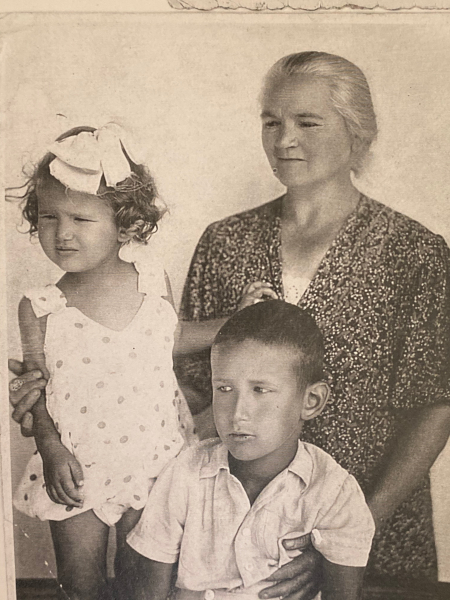
If we are the lucky ones – not experiencing firsthand violence – we doom-scroll the ubiquitous news, a cycle as well, and see current worldwide atrocities unfolding from the zone of interest which is our smart phone or computer, and then succumb to an ad targeting our need for a new bag or anti-aging cream … Modern life has conditioned us to live this way, whether or not we could do something to stop the horrors next door to us. In the words of author and Auschwitz survivor Elie Wiesel, “There may be times when we are powerless to prevent injustice, but there must never be a time when we fail to protest.”
Glazer’s The Zone of Interest is then like a large mirror, centered on comfortable domestic life, forcing us to stare at our collective modern reflection.



